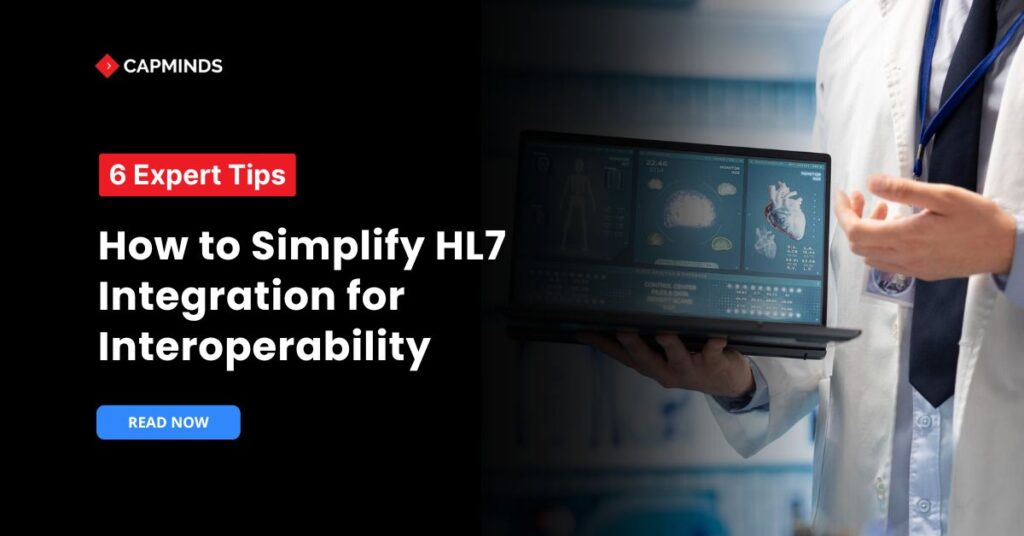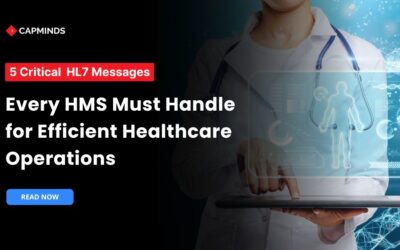How to Simplify HL7 Integration: 6 Expert Tips You Need to Know
Efficient health data exchange is important in a fast-paced healthcare environment. Health Level Seven standards facilitate this by enabling seamless communication among diverse healthcare systems. However, integrating HL7 can be challenging.
In this blog post, we have discussed HL7, its key standards, and benefits and provided six expert tips to simplify HL7 integration.
What is HL7?
HL7 is a set of international standards developed by Health Level Seven International. It is a non-profit organization that governs the exchange, integration, sharing, and retrieval of electronic health information. Established in 1987, HL7 seeks to standardize how health information systems interact. The standard ensures interoperability and simplifies data transmission.
HL7 Standards incorporate a variety of standards. Among them, Version 2.x is widely utilized for communications in healthcare settings. These messages are composed of segments and fields intended to convey various types of information, such as:
- Patient Demographics
- Clinical observations.
- Administrative data.
Healthcare organizations that adhere to HL7 standards can accomplish seamless integration of systems including EHR, LIS, and RIS.
Related: HL7 FHIR vs. Traditional Data Standards: Why Interoperability Matters
Key HL7 Standards (HL7 v2, HL7 v3, and FHIR)
HL7 encompasses several standards, with the most prominent being:
- HL7 Version 2: Widely adopted, HL7 v2 facilitates the exchange of clinical data, including patient admissions, discharges, and transfers.
- HL7 Version 3: This version introduces a more rigorous methodology and utilizes an object-oriented approach to enhance data exchange reliability.
- Fast Healthcare Interoperability Resources (FHIR) leverages modern web technologies to simplify data exchange and is designed to be easier to implement than its predecessors.
Related: HL7 FHIR & EHR Data Transmission: 9 Easy Steps to Implement
Benefits of HL7 Standards for Health Interoperability
Implementing HL7 standards offers numerous advantages:
- HL7 ensures that healthcare providers have timely access to comprehensive patient information by enabling seamless data exchange.
- Standardized data formats reduce administrative burdens, streamline workflows, and minimize errors associated with manual data entry.
- Interoperability decreases the need for redundant tests and procedures. This leads to significant cost savings for healthcare organizations.
6 Expert Tips to Simplify HL7 Integration
1. Understand HL7 Standards and Versions
- Organizations often struggle with integration due to a lack of understanding of the different HL7 versions and their compatibilities.
- With a solid grasp of HL7 standards, teams can ensure compatibility and smoother integration processes.
- Encourage thorough familiarization with various HL7 versions and their structures.
2. Maintain Consistency in Data Translation
- Inconsistent data translation can lead to misinterpretations, data loss, and integration failures.
- Consistent data translation ensures accurate communication between systems, preserving data integrity.
- Implement standardized data translation protocols and utilize tools that enforce consistency across all integrated systems.
3. Utilize Advanced Integration Tools with Clear Visibility
- Monitoring and managing data transactions can become cumbersome without proper tools, leading to inefficiencies and potential errors.
- Advanced integration tools provide clear visibility into data flows, enabling proactive management and swift issue resolution.
- Invest in integration solutions that offer comprehensive monitoring features, ensuring transparency and control over data transactions.
4. Employ Real-World Data for Testing
- Relying solely on standardized test data may not reveal integration issues that occur in real-world scenarios.
- Testing with real-world data uncovers potential challenges, leading to more robust and reliable integration.
- Incorporate actual operational data in testing phases to identify and address issues that standardized data might overlook.
5. Develop a Comprehensive Data Model
- A lack of a unified data model can result in redundant mappings, increased complexity, and maintenance challenges.
- A well-planned data model standardizes data structures, reduces redundancies, and simplifies integration processes.
- Design and implement a comprehensive data model that aligns with organizational needs, promoting consistency and efficiency.
6. Establish a Robust Monitoring Strategy
- Without continuous monitoring, integration issues can go unnoticed. This leads to data discrepancies and operational disruptions.
- A robust monitoring strategy ensures real-time detection of issues, allowing for prompt resolution and maintaining system integrity.
- Develop and implement a monitoring framework that continuously assesses integration performance and alerts stakeholders.
CapMinds HL7 FHIR Service for Healthcare Practice
CapMinds offers the best all-in-one health interoperability solution for healthcare practices. Our HL7 FHIR service will understand your clinical needs and requirements to cater to our solution.
With years of experience in this field, we have faced many challenges and tackled them with ease. Why can CapMinds be your Go-to Interoperability Solution?
- We are experienced professionals with years of experience in the field.
- Our technical team is an expert who will analyze your healthcare practice thoroughly to tailor the Interoperability solution.
- We prioritize safety, security, encryption, and authentication to protect your healthcare practice patient’s data.
- Our comprehensive solution ensures seamless interoperability adhering to industry standards, and using standard protocols.
- We offer comprehensive training sessions to healthcare staff.
- Our affordable health interoperability solution benefits healthcare practice at all levels.
If you are searching for the best interoperability service for your practice, CapMinds is your choice. We can assist you by navigating all potential challenges and ensuring seamless health data exchange.
Reach out to CapMinds Health Data Exchange Solutions for your Healthcare Practice.




